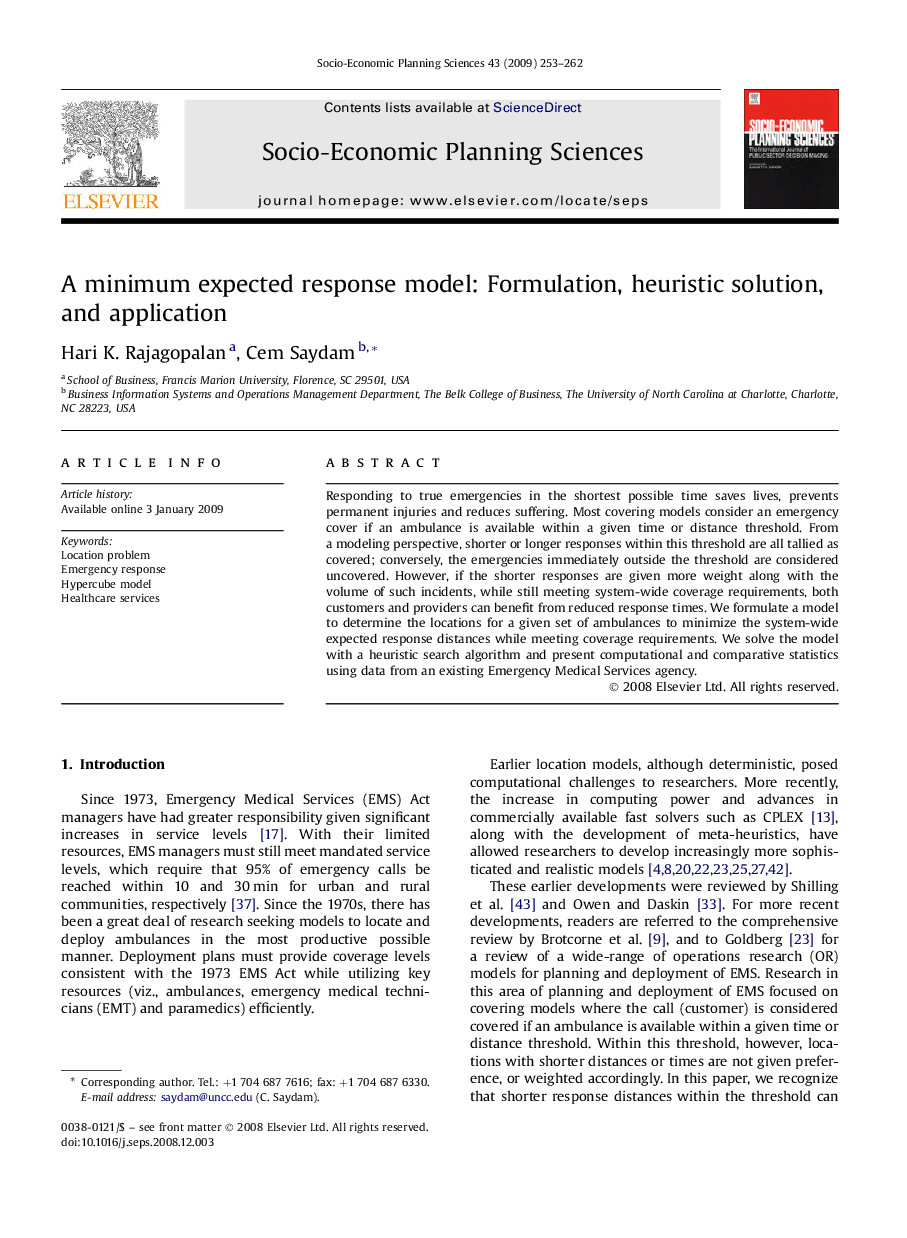| Article ID | Journal | Published Year | Pages | File Type |
|---|---|---|---|---|
| 987395 | Socio-Economic Planning Sciences | 2009 | 10 Pages |
Responding to true emergencies in the shortest possible time saves lives, prevents permanent injuries and reduces suffering. Most covering models consider an emergency cover if an ambulance is available within a given time or distance threshold. From a modeling perspective, shorter or longer responses within this threshold are all tallied as covered; conversely, the emergencies immediately outside the threshold are considered uncovered. However, if the shorter responses are given more weight along with the volume of such incidents, while still meeting system-wide coverage requirements, both customers and providers can benefit from reduced response times. We formulate a model to determine the locations for a given set of ambulances to minimize the system-wide expected response distances while meeting coverage requirements. We solve the model with a heuristic search algorithm and present computational and comparative statistics using data from an existing Emergency Medical Services agency.
